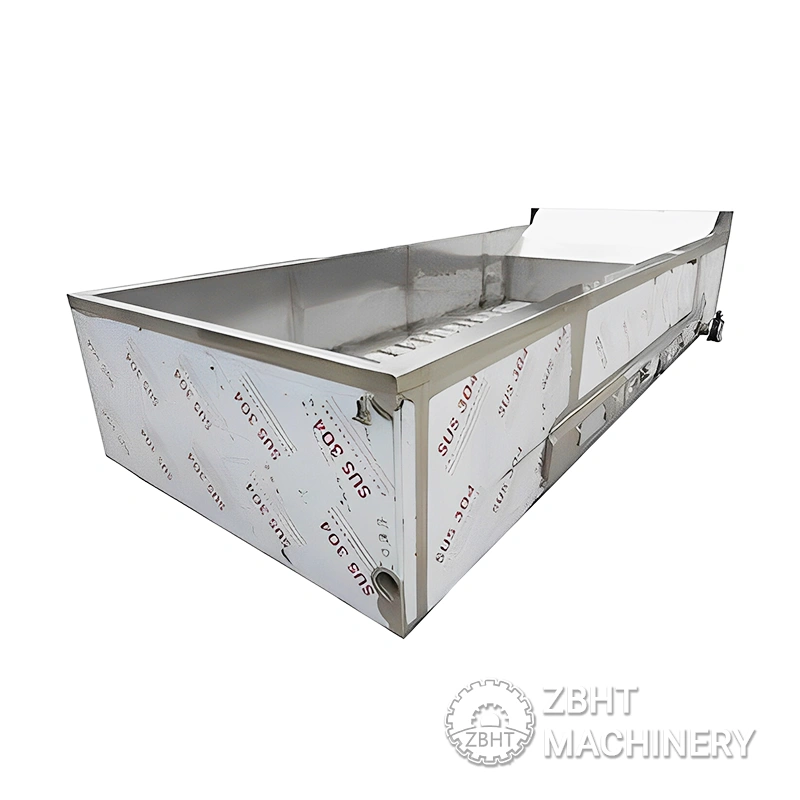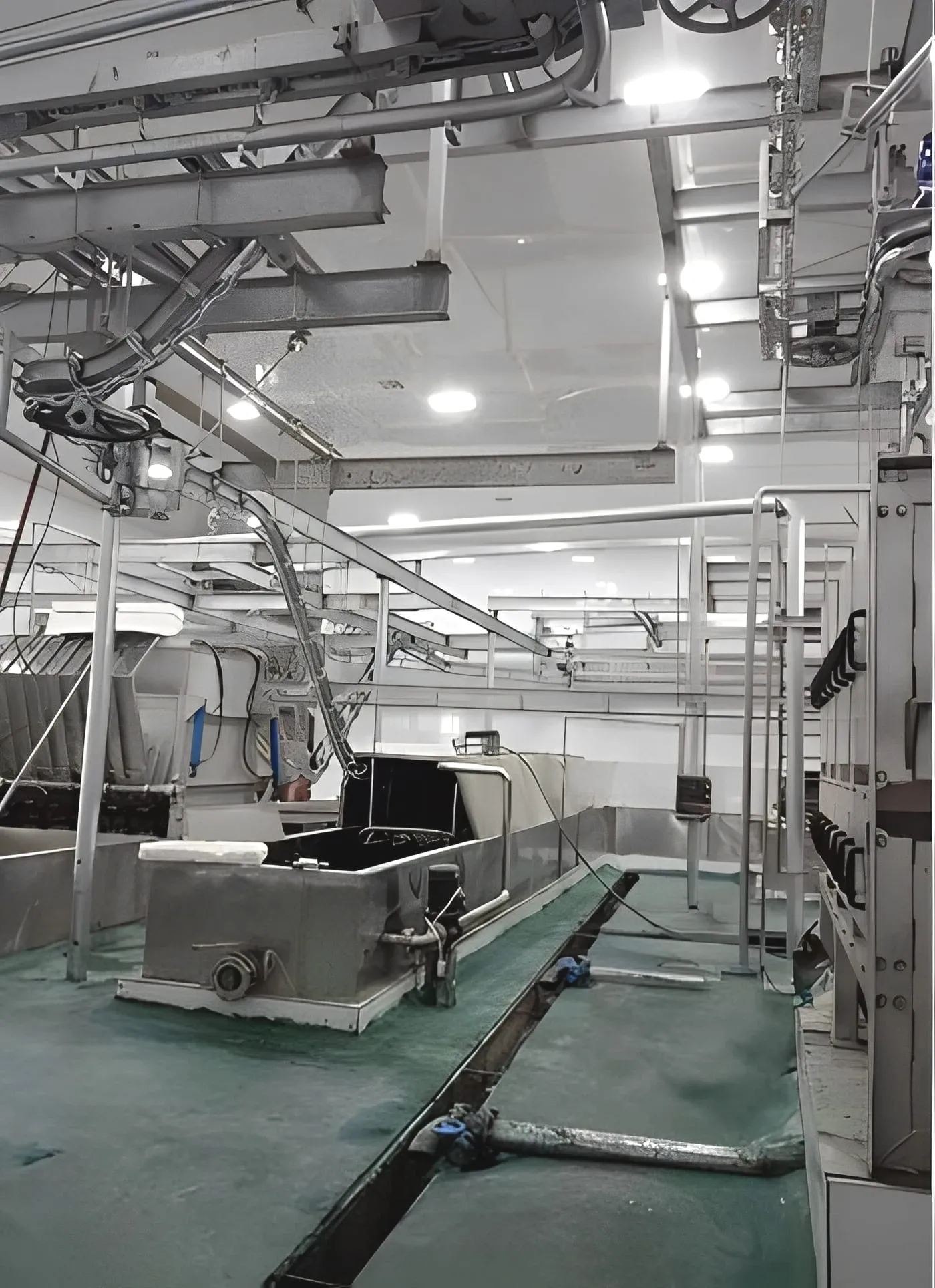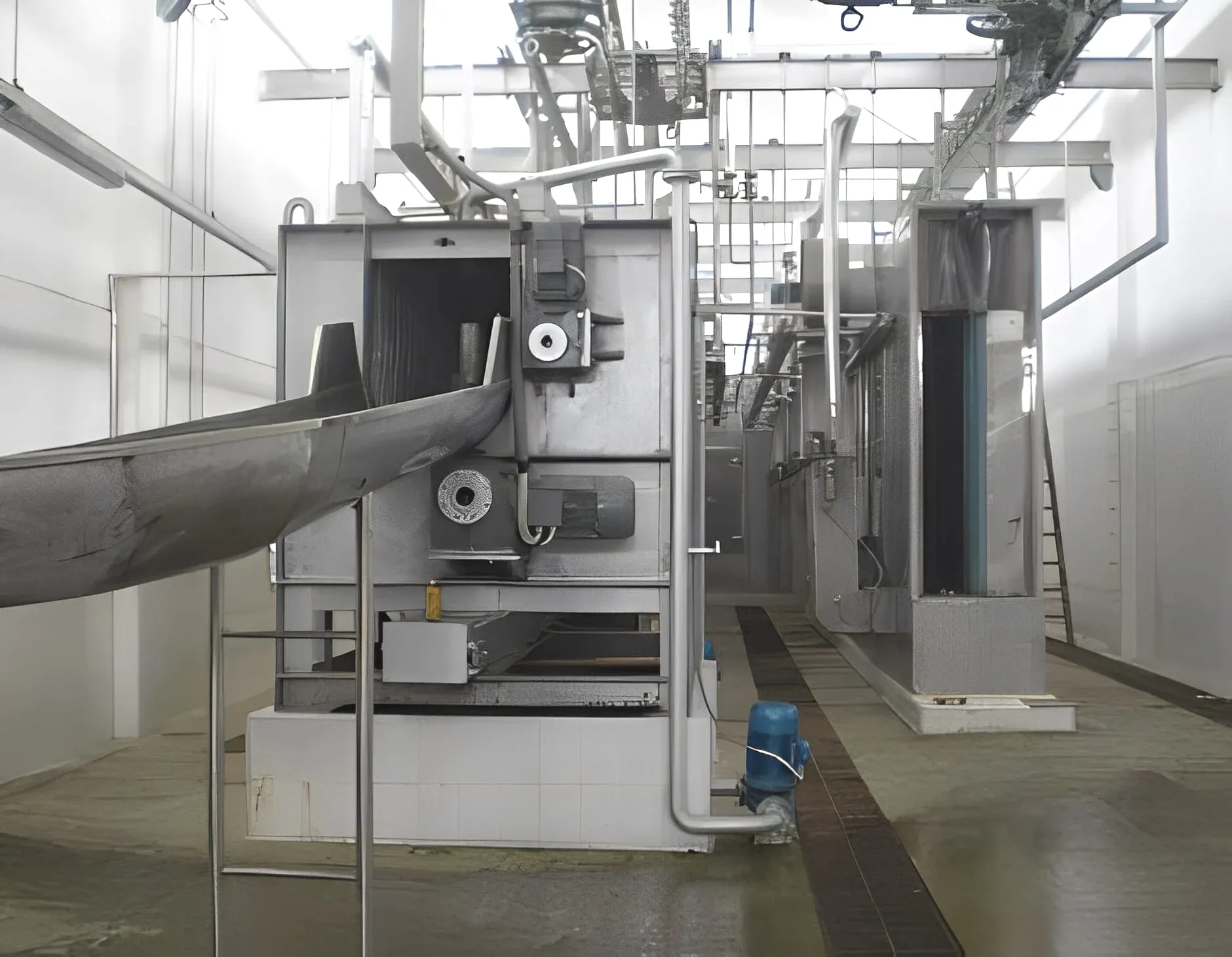
The main purpose of the scalding tank is to scald pigs or sheep, which is convenient for hair removal.
It is made of stainless steel plate, thermal insulation material, heating device, and I-beam, which can be customized according to the size of the slaughtering volume.
There are three common types of pig scalding tanks
(1) Ordinary pig scalding tank: unload the bloodletting pigs into the receiving table of the scalding pond through the pig unloader, and slowly slide the pig body into the scalding pond for scalding. The methods of scalding include manual scalding and The pig scalding machine is shaken and scalded. The water temperature of the scalding pool is generally controlled between 58-62 °C. The water temperature is too high to prevent the pig body from being scalded white and affect the hair removal effect. Scalding time: 4-6min. A “skylight” is designed directly above the scalding pool to discharge water vapor.

(2), canal-style pig scalding tank:
The hairy pig hanging on the bloodletting line is used up and down the slope, and the hairy pig hanging on the bloodletting line is lowered into the scalding pool. After a certain period of scalding, the scalded pig body is slid into the four-axis dehairing machine through the pig unloader. Hair removal is characterized by a certain scalding time, which is more suitable for pigs of the same size, and the scalding effect is better. However, the bloodletting line should be adjusted at a certain speed according to the season. The disadvantage is that due to the sequential immersion of the pig body, the scalding effect of the rear part of the pig is not very ideal, and the heat loss of the scalding tank is large.

(3), tunnel steam scalding pool:
Tunnel steam scalding is a relatively advanced scalding process at present. After the pigs drain their blood, they pass through a closed steam tunnel under the action of steam to achieve the effect of scalding. The pig body is heated evenly in the tunnel. Hanging on the conveyor line, they do not touch each other during the scalding process, avoiding cross-contamination of the knife edge. Because the pig body is directly scalded with steam, the heat loss is low, which can effectively save energy.
The main technical parameters:
Scalding time: 4 minutes Scalding temperature: 60-63℃
Motor power: 4KW+1.5KW Rated voltage: 380VAC
The lamb scalding tank is the same as the first type of pig scalding pool, but there are some differences in size.
No. We are the original manufacturer of animal slaughtering lines, meat processing equipment, deboning and cutting system, spare parts, etc.
We have 3 slaughtering lines in our factory, including 1 cattle slaughtering line, 1 sheep slaughtering line and 1 pig slaughtering line. We also have deboning and cutting systems, hygiene tools, etc in our factory. You can also see the different design in our sample line room.
Normally, we will need 3 weeks for single machine, and 2 months for a whole production line. For confirmation, we will need to confirm with production director first. However, we will make your production lines as soon as possible.
We will need 30% of total contract value in advance by T/T as deposit. And the balance will be paid before your products are shipped out of factory.
We have our own inspection team in factory. They will inspect the raw material, semi-finished product, finished product following our drawing and standard in quotation sheet. You will get what you see during factory visit and you can check your products during the production anytime during the production.
Yes. We will send 1 engineer for overseas project guiding installation. As a buyer, you will need to pay for the round way air tickets, food and accommodation, local transportation in your project location, and also pay the allowance of the technician during installation.